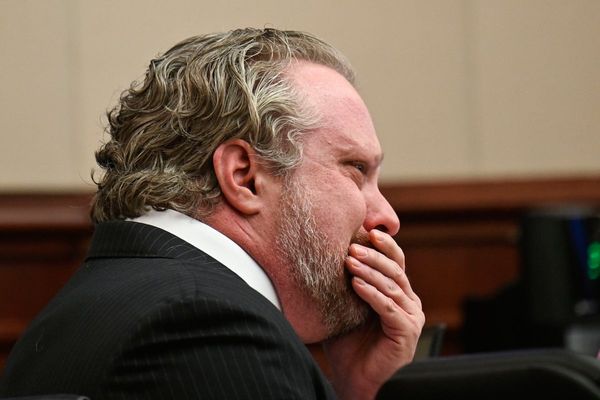As the climate crisis accelerates, it’s hard not to wonder if today’s societies can adapt. Growing worries over climate change have sparked interest in the collapse of ancient civilizations and the rise of the (often apocalypse-themed) “cli-fi” genre in popular culture. But before turning to the past for answers, it is important to think about what collapse is and why it matters.
Researchers often define collapse as a social simplification in which hierarchies are flattened or governance systems break up. But with this definition it’s not clear what is inherently “bad” about collapse. After all, the disintegration of colonial empires in the mid-20th century was a collapse by this definition — and a development which most would celebrate.
So why is collapse often seen as something to be prevented? Our research suggests an alternative understanding of societal collapse that answers this question. We propose that societal collapse is not a flattening of hierarchy but a loss of collective capacity to meet basic needs of the population.
We argue that the demise of a social hierarchy need not entail societal collapse, what matters is how events impact human welfare. Therefore, it is necessary to pin down what exactly is harmful about collapse before trying to generalize from past examples. After all, the purpose of learning from history should be to prevent wrongs, not protect contemporary inequalities.
Like a house falling down
In our recent analysis of the study of collapse, we proposed that collapse is better understood as the difficult-to-reverse loss of capacity to carry out basic functions. Think of the clearest example of collapse: a building crumbling to the ground.
If the building is a house, basic functions would include providing shelter and a meeting space for household members. A collapsed house can no longer do those things.
In this example, the change is pervasive because the entire house is affected, not just one room. It is also difficult to reverse, since that would require rebuilding from the ground up.
For a society, basic functions at a minimum include providing water, food and security to the population. What counts as a “basic need” may evolve over time, for example, to include access to newly invented medicines.
We argue that a society collapses when it suffers a loss of collective capacity to meet the basic needs of the majority of the population. Examples of scarcity in conflict zones around the world provide a stark reminder of the precariousness of human abilities to meet basic needs, including in Yemen where almost a decade of conflict has left the country on the “edge of total collapse.”
Our proposal differs from definitions of collapse focused on simplification and political fragmentation. Capacity to meet basic needs of the population is not always enhanced by social complexity, nor always diminished when hierarchies disappear.
The classic Maya
Works on societal collapse almost always discuss the end of the classic Maya period. Often seen as the height of ancient Maya civilization, the classic period came to a dramatic end between 900 and 1000 CE. However, scholars continue to debate whether the word “collapse” is an appropriate description of it.
On the one side it is claimed that factors such as drought and declining soil fertility caused the collapse of key Mayan regions starting around 800 CE. These researchers often cite population loss as justification for the term “collapse.”
On the other side of this discussion, scholars have argued that only a class of warring divine kings collapsed, not Mayan society as a whole. From this perspective, the post-classic Maya period is an example of resilience and transformation, not collapse.
Read more: A ‘river of experience’: How many ways of knowing feed a course on the climate crisis and actions
This dispute nicely illustrates our claim that loss of social complexity is not sufficient for societal collapse. Both sides agree that the class of divine kings was substantially diminished by the end of the classic Maya period. But they disagree about whether that was a collapse.
Given our proposal, evidence of significantly increased mortality and morbidity could show that the classic Maya really suffered a societal collapse. That would suggest the conclusion of the classic Maya period coincided with a widespread loss of capacity to meet basic population needs.
That being said, were Mayan population losses due to starvation, disease and war, or mainly to migration in search of better opportunities? The former scenario suggests a societal collapse, while the latter adaptation to changing circumstances.
Clarifying the debate about the classic Maya is helpful for thinking about the future, because it suggests societal collapse might be avoided despite political upheaval and migration. That is an important lesson when considering risks of climate change.
Collapse and climate change
In September 2023, the Pacific island state of Tuvalu amended its constitution to declare that it would continue to exist even if its territory was lost due to climate change. While still uncertain, this outcome is scientifically plausible.
Some scientists project that most coral atolls may become uninhabitable by the mid-21st century due to factors ranging from ocean flooding contaminating freshwater sources to the disintegration of the island itself.
Suppose the territory of a small island state became uninhabitable. Would that mean it had collapsed? That depends on how people and governments respond.
Societal collapse in this situation is indeed possible. That could occur if the government of the island was dissolved, key infrastructure destroyed and its population transformed into stateless refugees. In this case, basic needs of Tuvalu’s population, like shelter, nutrition and health care, might go unmet.
But collapse is not inevitable. The island could continue as an ex-situ state, recognized by the international community and with resources to support the interests and culture of its population. Tuvalu’s 2023 constitutional amendment is intended to legally support such an arrangement.
Securing the cooperation and assistance of other governments is a significant challenge here. Host states would need to admit the island’s population as legal residents while continuing to recognize their original citizenship.
Hopefully, small island states like Tuvalu can adapt in place. But the alternative need not be catastrophic collapse. To see how that’s so, it’s necessary to think about why collapse matters and recognize that while hierarchies may change, as long as basic needs are met, a society can endure.
This article was written with the support of University of British Columbia graduate student Charly Phillips.
Daniel Steel receives funding from the Social Sciences and Humanities Research Council of Canada (SSHRC) through their Insight Grants program.
Amanda Giang receives funding from the Social Sciences and Humanities Research Council of Canada (SSHRC), Natural Sciences and Engineering Research Council of Canada (NSERC), Environment and Climate Change Canada, and the Pacific Institute for Climate Solutions.
Kian Mintz-Woo receives funding from the Social Sciences and Humanities Research Council of Canada (SSHRC) under the SSHRC Insight Grant Program.
This article was originally published on The Conversation. Read the original article.







